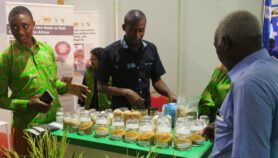By: Manoj Varma
Send to a friend
The details you provide on this page will not be used to send unsolicited email, and will not be sold to a 3rd party. See privacy policy.
Nanomedicine requires careful development, not a great rush to jump on the bandwagon, argues nanotech expert Manoj Varma.
There has been much excitement recently about the sweeping potential impact of an emerging scientific discipline called nanomedicine in the area of healthcare.
The availability of a broad set of tools for the design and manufacture of devices measured in nanometres – also known as nanofabrication tools — enable us to envisage devices and methods that manipulate biological systems at a deep molecular level.
Some of these tools include electron beam lithography, molecular beam epitaxy, and colloidal synthesis used to produce large amounts of quantum dots.
These devices can be used to improve human health in various ways, such as fixing gene defects, attacking weak links in disease pathways. In the most extreme case, nanorobots could be developed that routinely inspect the body, actively sensing various chemicals and perhaps activating other nanorobots capable of cell repair.
These and related technologies constitute the field of nanomedicine, which can be broadly divided into three areas, nano-diagnostics (in-vitro and in-vivo sensing and imaging systems capable of quantifying and visualizing the levels of various bio-molecules at the cellular level), targeted drug delivery (on-demand delivery of drug molecules targeted specifically to the diseased cells) and cell and tissue repair (synthetic growth of tissue by targeted delivery).
The ability to manipulate biological systems at the molecular level will doubtless lead to great medical advances in years to come. However, now is not the time for industry to wantonly try to create such ‘killer applications’ in nanomedicine. The success rate is likely to be abysmally low, given the still substantial gaps in the fundamental science, as well as many sticky ethical and intellectual property issues, for instance related to the patenting of genes.
Research gaps
Research in different areas of nanomedicine is being vigorously pursued around the world, including in developing countries. In India, for example, the Department of Biotechnology has a special funding initiative in the closely related area of nanobiotechnology.
Materials issues related to targeted drug delivery systems and biologically compatible polymer systems have been a major focus of research in India. For instance, Indian researchers have developed biodegradable nanoparticles for the targeted delivery of epidermal growth factors for the treatment of breast cancer. Even though various research groups are working to develop such systems for targeted drug delivery, uncertainty about their potential toxicity and side-effects are hindering the commercial exploitation of this technology.
This example illustrates how gaps in the research are delaying the realisations of many nanomedicine technologies, perhaps for a couple of decades. The current balance of research in nanomedicine is still heavily tilted towards basic research, rather than applied research with short-term commercial potential. As a result, industrial participation at this stage requires the investment of money, manpower and time far beyond the comfort zone of the risk-averse business sector in India, and perhaps across the world.
Nanodiagnostics
Unlike most other areas of nanomedicine, nanodiagnostics is one area where India’s industry, specifically its biotechnology and pharmaceutical industries, can have a significant impact. It does not present as high a barrier to industrial involvement as gene therapy, for example, either in terms of technical understanding or with regard to the ethical or intellectual property issues.
Indian researchers have demonstrated significant advances in the development of diagnostic tools. Nano-structured thin films have been used to detect DNA sequences specific to the bacterium that causes tuberculosis, for example, and Indian labs have developed portable test kits for malaria, dengue fever and HIV.
Unfortunately, the real impact of the nanoscale diagnostic tools being developed in India has not been assessed because academic labs lack the economic and infrastructural capacity to conduct large-scale validation tests.
India’s biotech sector has already developed the capacity for clinical validation. Indian pharmaceutical companies have successfully manufactured low-cost drugs, for example, supplying more than 40 per cent of the hepatitis B vaccine used by the UN Children’s Fund (UNICEF) in developing countries, and the Serum Institute of India provides half of the global requirement of measles and DPT (for diphtheria, pertussis and tetanus) vaccines. If pharmaceutical or biotech companies can work with academic labs to evaluate new nanodiagnostic tools, this would be a wonderful way of channelling academic research into clinical use.
It is heartening to see that a few companies, mostly Indian branches of multinationals, are beginning to develop diagnostic tools and related technologies by partnering with Indian academics. Hopefully, more players, perhaps even some indigenous ones, will follow their lead.
No cure-all
Healthcare improvement programmes are as dependent on socioeconomic policies as they are on technological advances. Although nanomedicine offers great potential to improve human health, it is not the only option we have. The extent to which it will impact on society, particularly in the developing world, strongly depends on our social policies.
Investment in nanomedicine must not come at the cost of marginalising other programmes, such as the development of low-cost generic drugs, which may have more social impact.
This view steers us clear of taking an over-optimistic view of nanomedicine and the associated hype regarding ‘killer apps’, which is likely to have detrimental effects for nanomedicine in the long term.
Manoj Varma is assistant professor in the Department of Electrical Communication Engineering and the Center for Nano Science and Engineering at the Indian Institute of Science, Bangalore, India.
This article is part of a spotlight on Nanotechnology for health.













